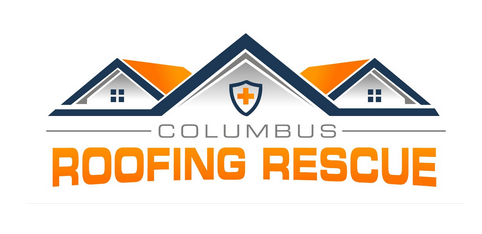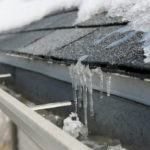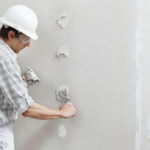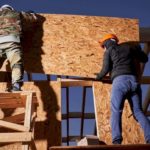
How Long Does a Roof Last
One of your biggest investments you’ll ever make is in your home’s roof. The roof protects your home from the elements, and knowing how long it will last is important. I’ll take you through some of the things you need to know about how long a roof lasts, including the factors that affect its lifespan, the average lifespan of different types of roofs, signs that indicate a roof needs replacement, and tips on how to extend your roof’s lifespan.
Factors Affecting Roof Lifespan
Several factors affect the lifespan of a roof. The first factor is the type of roofing material used. A roof’s lifespan also depends on the quality of the installation, the climate of the area, and the amount of maintenance the roof receives.
Another determining factor that affects the lifespan of a roof is the slope of the roof. A roof with a steep slope will last longer than a flat one. This is because water and debris are more likely to accumulate on a flat roof, which can lead to leaks and other damage.
Some other factors that can affect the lifespan of a roof include the amount of sunlight the roof receives, the quality of the attic ventilation, and the amount of foot traffic on the roof.
Average Lifespan of Different Types of Roofs
The lifespan of a roof depends on the material used on your roof. These are the average lifespans of some of the most common types of roofs:
– Asphalt shingles: 20 to 25 years
– Metal roofs: 40 to 70 years
– Tile roofs: 50 to 100 years
– Wood shake roofs: 20 to 40 years
– Slate roofs: 75 to 200 years
It’s important to note that these are just averages. The lifespan of your roof will depend on factors like the quality of installation and the amount of maintenance the roof receives.
Signs That Indicate a Roof Needs Replacement
Several signs indicate a roof needs replacement. The first sign is water stains on the ceiling or walls, and this can indicate a leaky roof. Other signs indicating a roof needs replacement include missing or damaged shingles, cracked or warped tiles, and visible wear and tear.

If you notice any of these signs, it’s important to have your roof inspected by a professional, and they can assess the damage and recommend the best course of action.
How to Extend the Lifespan of Your Roof
There are several things you can do to extend the lifespan of your roof. The first is to make sure it receives regular maintenance. This includes cleaning the gutters, inspecting the roof for damage, and fixing any issues promptly.
Another way to extend the lifespan of your roof is to ensure it has proper ventilation. This allows air to circulate through the attic, which helps regulate the temperature and prevent moisture buildup.
Finally, being mindful of foot traffic on the roof is important. Walking on the roof can cause damage, so avoid doing so unless absolutely necessary.
How Long Do Roof Shingles Last?
Roof shingles have an average lifespan of 20 to 25 years. However, this can vary depending on the quality of the shingles and the climate of the area. Shingles that receive a lot of sunlight or are exposed to harsh weather conditions may not last as long as shingles in milder climates.
Inspecting your roof shingles regularly for signs of wear and tear is important. If you notice any issues, it’s best to have them addressed promptly to prevent further damage.
How Long Does a 30-Year Roof Really Last?
A 30-year roof is designed to last for 30 years. However, this is just an estimate, and the actual lifespan of the roof can vary depending on factors like the quality of installation and the amount of maintenance the roof receives.

In general, a 30-year roof can last anywhere from 20 to 30 years. If you want to maximize the lifespan of your 30-year roof, it’s important to follow proper maintenance procedures and have it inspected regularly by a professional.
Roof Maintenance Tips
Making sure you do regular maintenance is key to extending the lifespan of your roof. Here are some helpful tips on how to maintain your roof:
– Clean the gutters regularly to prevent water damage.
– Inspect the roof for damage after storms or harsh weather.
– Trim nearby trees to prevent damage from falling branches.
– Repair any damage promptly to prevent further damage.
– Ensure proper attic ventilation to prevent moisture buildup.
– Hiring a Professional for Roof Inspection and Repair
If you notice any signs that your roof needs repair or replacement. Hiring a professional is essential. Suppose you suspect that your roof may have sustained damage. In that case, it is advisable to contact a professional roofer who can conduct a thorough roof inspection and recommend the best course of action.
When hiring a professional, choose someone with experience and a good reputation. It’s also very important to get a written estimate before any work is done.
Conclusion and Summary
The lifespan of your roof depends on many factors, including the type of material used and the quality of installation. The average lifespan of a roof can vary depending on the material used, with asphalt shingles lasting 20 to 25 years and tile roofs lasting up to 100 years.
If you notice any signs that your roof needs replacement, it’s essential to have it inspected by a professional. Regular roof maintenance will also help extend the lifespan of your roof, as can proper attic ventilation.
Remember to hire a professional for roof inspection and repair and to choose someone with experience and a good reputation. With proper care and maintenance, you can ensure that your roof lasts as long as possible.
If you need more clarification about the lifespan of your roof, or if you’re concerned that it may need repair or replacement, feel free to contact a professional. They will help you assess the condition of your roof and recommend what should be done.
In summary, understanding how long a roof lasts is essential for homeowners. By knowing the factors that affect the lifespan of a roof, the signs that indicate a roof needs replacement, and the steps you can take to extend the lifespan of your roof, you can ensure that your home remains protected from the elements for years to come.



